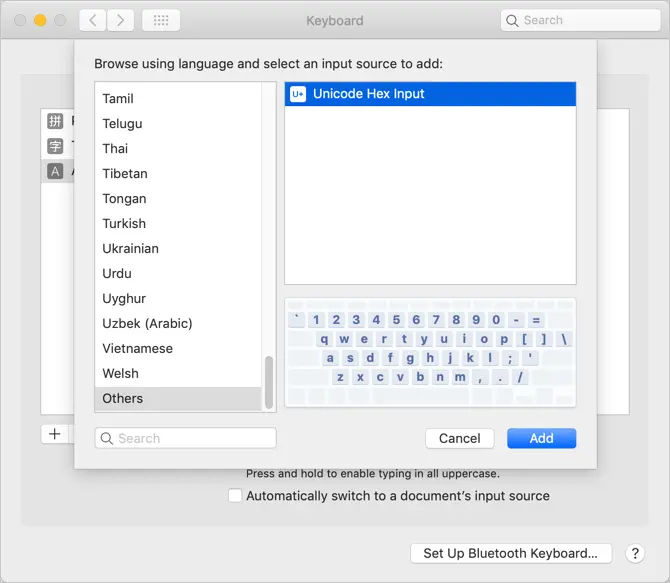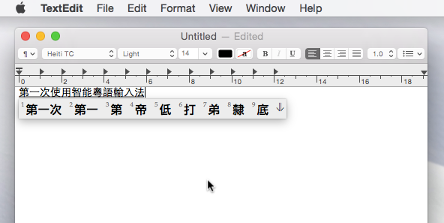- Cuneiform Input Method For Mac Os
- Cuneiform Input Method For Machinery
- Cuneiform Input Method For Mac Download
- Cuneiform Input Method For Mac Operating System
Alternative input methods are used to input characters not marked on a standard US or UK keyboard. Below are some examples of input methods useful for Duolingo learners and instructions for installing them on your computer or mobile device. Car mechanic simulator 2018 mazda dlc. 1 Step 1: Choose an input method 1.1 Language-specific input methods 1.2 Input methods usable for more than one language 1.2.1 United States-International. Fahimeh 5 presented recognition method of Persian cuneiform characters by neural network with back propagation model 6. Raed presented a method for extract cuneiform symbols from clay tablets.
E balagurusamy fundamentals of computers pdf download. An input method (or input method editor, commonly abbreviated IME) is an operating system component or program that enables users to generate characters not natively available on their input devices by using sequences of characters (or mouse operations) that are natively available on their input devices. Using an input method is usually necessary for languages that have more graphemes than there are keys on the keyboard.
For instance, on the computer, this allows the user of Latinkeyboards to input Chinese, Japanese, Korean and Indic characters. On hand-held devices, it enables using the numeric keypad to enter Latin alphabet characters (or any other alphabet characters) or a screen display to be touched to do so. On some operating systems, an input method is also used to define the behaviour of the dead keys.
Implementations[edit]
- See your monogram in Cuneiform, the way an ancient Babylonian might have written it. The Penn Museum respectfully acknowledges that it is situated on Lenapehoking, the ancestral and spiritual homeland of the Unami Lenape.
- On your Mac, choose Apple menu System Preferences, click Keyboard, then click Input Sources. Open the Input Sources pane for me. Click the Add button, select Korean (on the left), then select any of the following. 2-Set Korean: Vowels are on the right side of the keyboard, and consonants on the left.This is the default input source for Hangul in macOS.
- NISUS WRITER PRO (MAC only) In Nisus Writer Pro, automatic text is linked with a glossary. A glossary, when loaded, is available for all documents, whatever template is used. The Cuneiform glossary is a file with cuneiform signs and associated entries. For more informations, see the NWP guide. Format: Cuneiform.ngloss.
Although originally coined for CJK (Chinese, Japanese and Korean) computing, the term is now sometimes used generically to refer to a program to support the input of any language. To illustrate, in the X Window System, the facility to allow the input of Latin characters with diacritics is also called an input method.
On Windows XP or later Windows, Input method, or IME, are also called Text Input Processor, which are implemented by the Text Services Framework API.
Relationship between the methodology and implementation[edit]
Main tera hero dvdrip free download. While the term input method editor was originally used for Microsoft Windows, its use has now gained acceptance in other operating systems[citation needed], especially when it is important to distinguish between the computer interface and implementation of input methods, or among the input methods themselves, the editing functionality of the program or operating system component providing the input method, and the general support of input methods in an operating system. This term has, for example, gained general acceptance on the GNU/Linux operating system; it is also used on the Mac OS.
- The term input method generally refers to a particular way to use the keyboard to input a particular language, for example the Cangjie method, the pinyin method, or the use of dead keys.
- On the other hand, the term input method editor on Microsoft products refers to the actual program that allows an input method to be used (for example MS New Pinyin). PRIME,[citation needed] or SCIM prefer the term of Input Method Engine, Input Method platform or Input Method environment,[citation needed] or the actual editing area that allows the user to do the input. It can also refer to a character palette, which allows any Unicode character to be input individually. One might also interpret IME to refer to the editor used for creating or modifying the data files upon which an input method relies.
See also[edit]
Cuneiform Input Method For Mac Os

Cuneiform Input Method For Machinery
Related techniques[edit]
- Keyboard layout, in particular dead keys

Input methods versus language[edit]
- Japanese language and computers and Japanese input methods
- Indic scripts input methods for languages used in South Asia, Southeast Asia, and parts of Central Asia and East Asia.
Specific input methods[edit]
- ATOK, and MS IME for Windows
- Tise—Tibetan IM for Windows
Input methods for handheld devices[edit]
- Multi-tap—Used on many mobile telephones—hit the (combined alphanumeric) key for the letter you want until it comes up, then wait or proceed with a different key.
- T9/XT9—Type the key for every letter once, then, if needed, type Next until the right word comes up. May also correct misspellings and regional typos (if an adjacent key is pressed incorrectly).
- iTap—Similar to first-generation T9, with word autocomplete.
- LetterWise—'Hit the key with the letter you want, if it doesn't come up, hit Next until it does.'
- Fleksy—Eyes-free touch typing for touchscreen devices, also used by blind / visually impaired people.[1]
- SwiftKey—context-sensitive word-prediction[2][3]
- FITALY An array, almost square, which minimizes distance traveled from one letter to another.
- MessagEase, an input method optimized for the most common letters, that can enter hundreds of characters with single hand motions
- Swype, an input method that uses swiping gestures instead of tapping to quickly enter text
- 8pen, an input method using circular swipes in an attempt to mimic hand movements
- Gboard, the keyboard that comes bundled with the Android operating system
- Graffiti, the Palm OS input method, entered using a stylus
- Pouces, an input method using touches and swipes
References[edit]
- ^Meddaugh, Jason (2013-02-01), 2012: A Technology Year in Review, USA: American Foundation for the Blind, retrieved 2013-02-25,
Our top story of 2012 involves a formerly little-known app called Fleksy and its rise toward prominence and mainstream acceptance.
- ^Fiedlerová, Klára (2012-05-10), Possibilities of Text Input for Handicapped People(PDF), Prague: Czech Technical University in Prague, p. 15, retrieved 2012-08-01,
Word prediction is used to speed up the text entry. The prediction system uses the context of the sentence to predict three words that could be used next.
- ^'For phones - SwiftKey'. SwiftKey. TouchType. Retrieved 2016-10-21.
External links[edit]

| Wikimedia Commons has media related to Input Methods. |
- BhashaIndia, the Microsoft portal for Indic languages, which has Indic IME for download.
Ranmaru
Member
Cuneiform Input Method For Mac Download

Cuneiform Input Method For Mac Operating System
- Joined
- Apr 26, 2009
- Messages
- 5
- Reaction score
- 0
- Points
- 1
- Your Mac's Specs
- MacBook Pro 2.33 GHz, 2 GiB RAM, OS X 10.5.6; iPod touch 16 GiB

I have a problem with Leopard's traditional Chinese input method. When I switch to pinyin input, my keyboard layout becomes messed up. I type on a standard US keyboard (QWERTY layout) which works fine when I use the Hanin input, but when I switch to pinyin, the layout becomes QWERTZ. That sucks because I constantly mix up the Y and Z keys and I can't get used to type Z where Y is supposed to be. On top of that, the punctuation marks like colon, semicolon, ditto marks etc. are someplace I can't find them.
Okay, I could just use the Hanin method to type Chinese since the layout is correct there but Hanin forces me to input the tone mark after every single character I type and that slows me down thoroughly, especially since I don't know the tone mark for every single character I want and I have to try and find it then which is extremely annoying.
So does anyone know where I can change the keyboard layout of the pinyin input back to standard QWERTY? I searched the preference pane but unlike Kotoeri (Apple's Japanese IME) it hasn't such an option. The help menu also doesn't seem to have an item on that matter.
Thank you in advance.